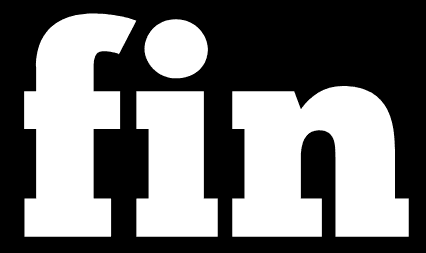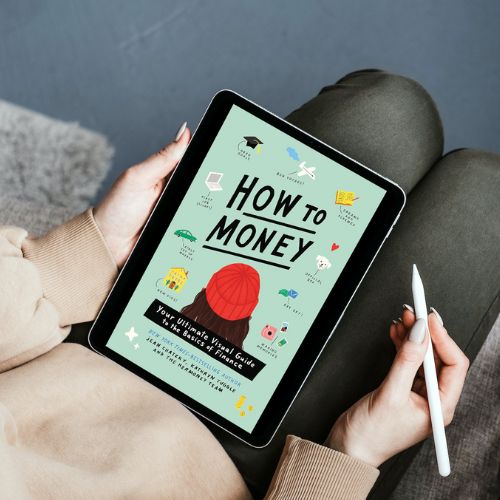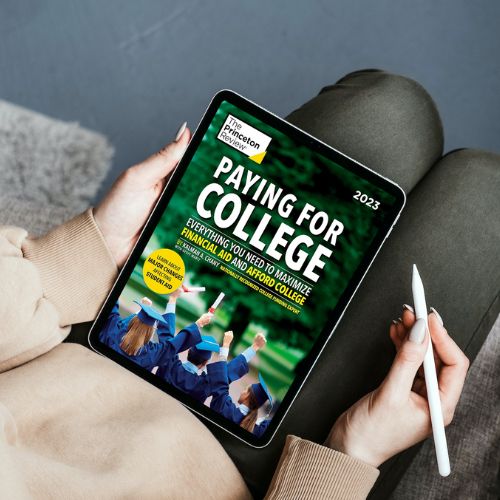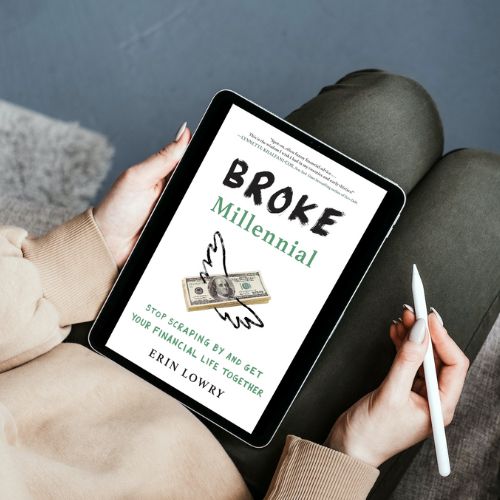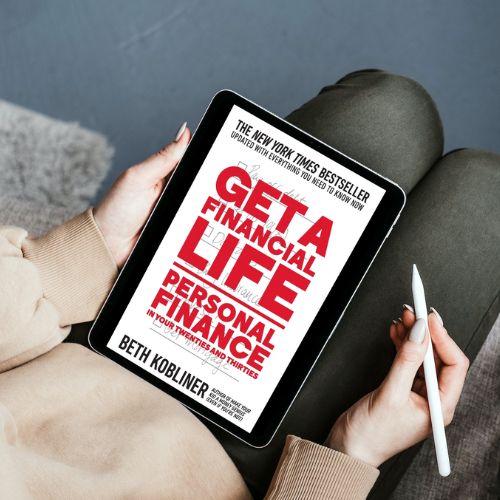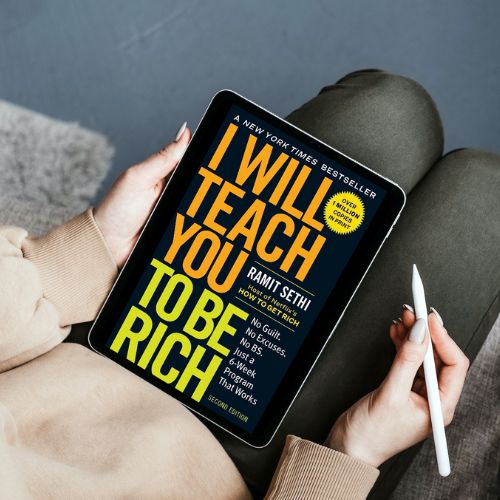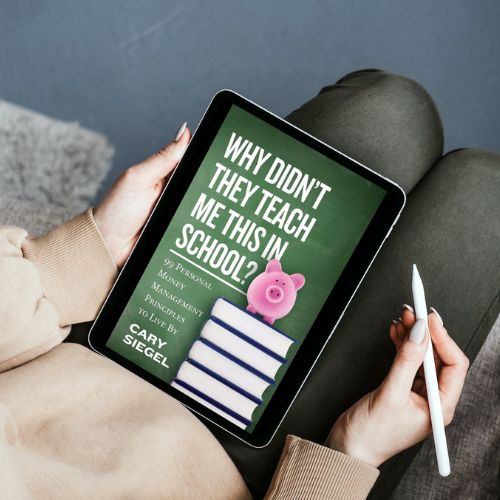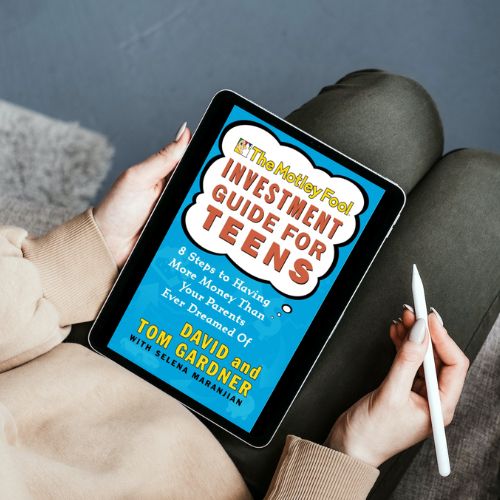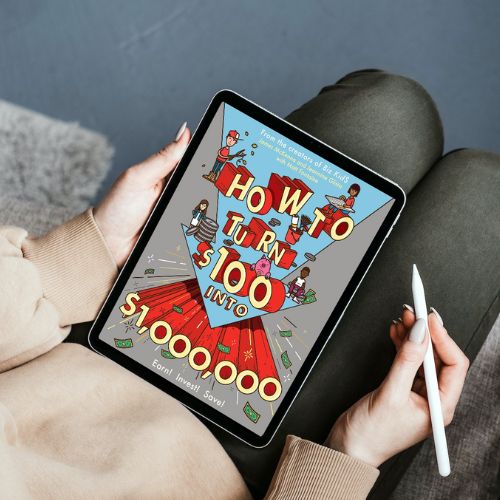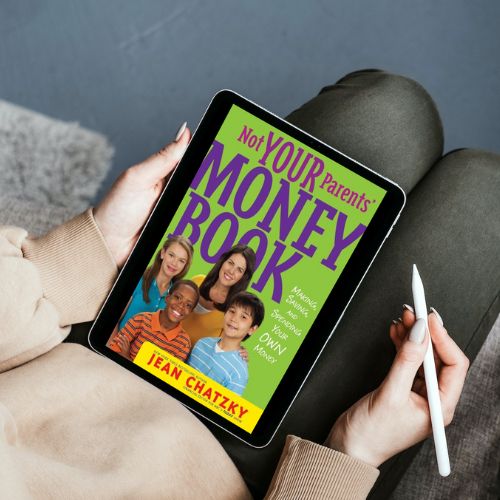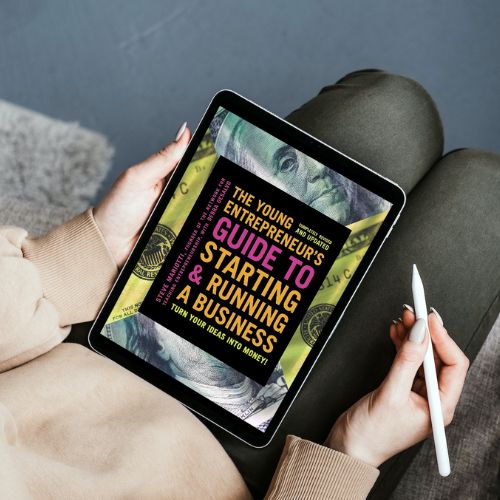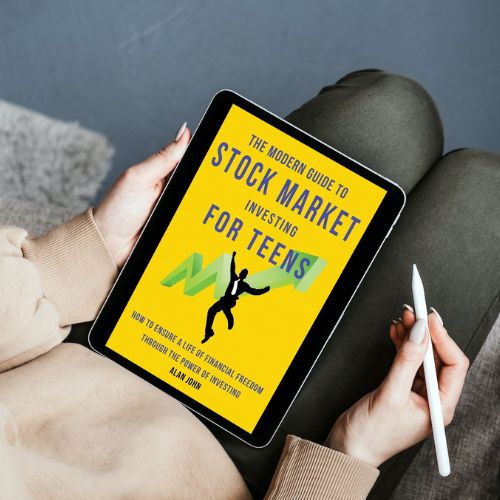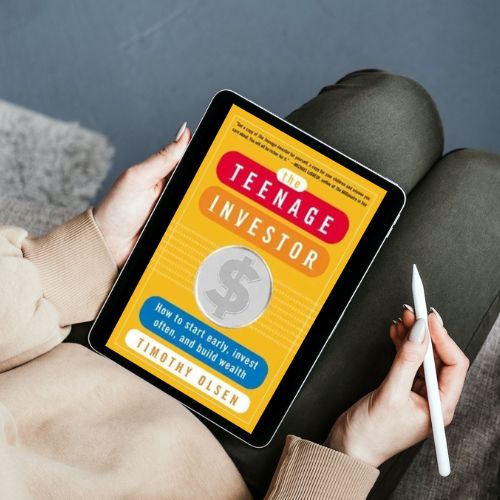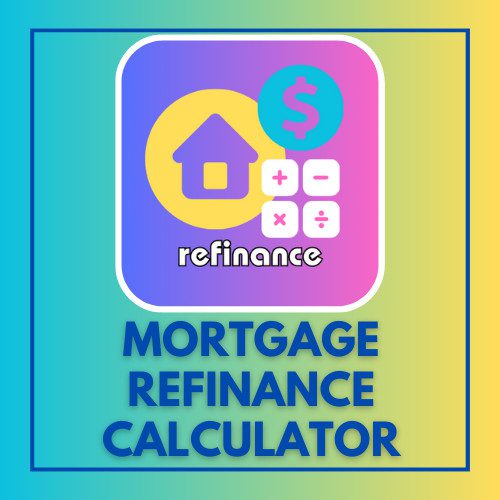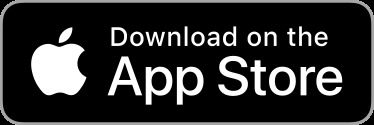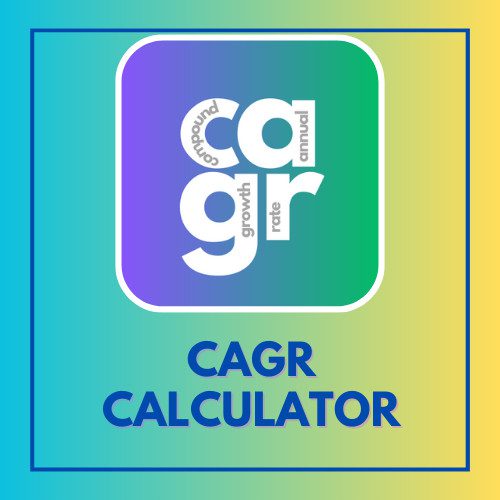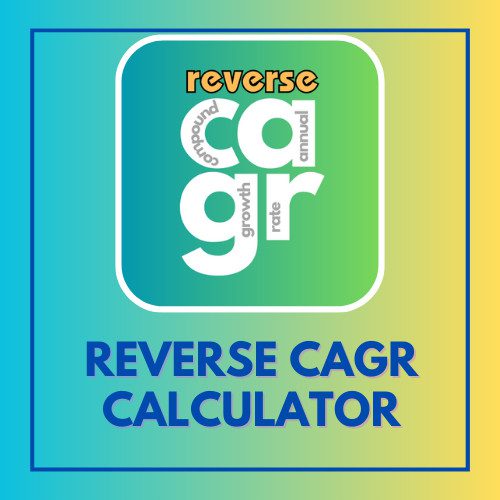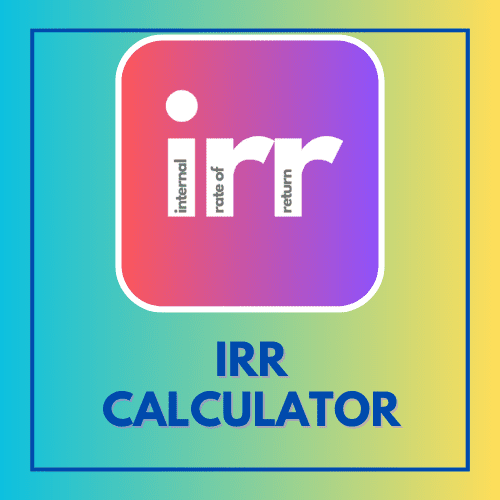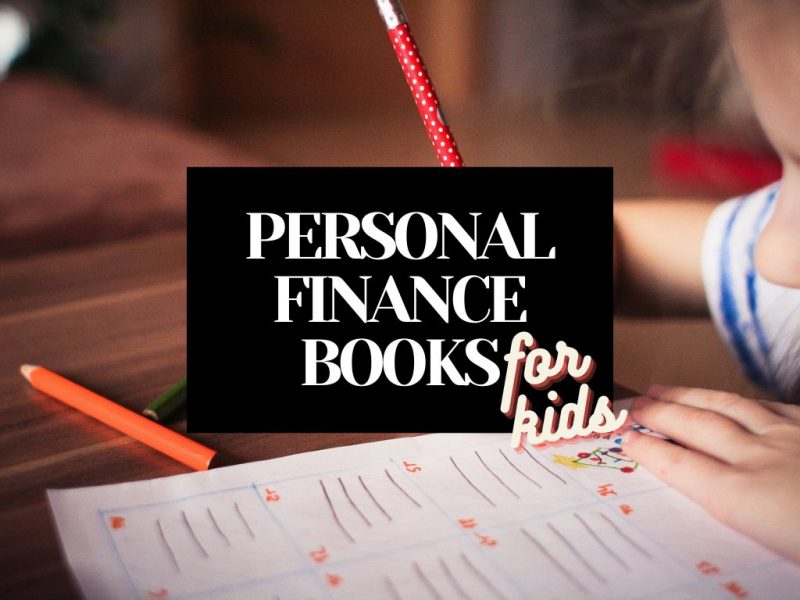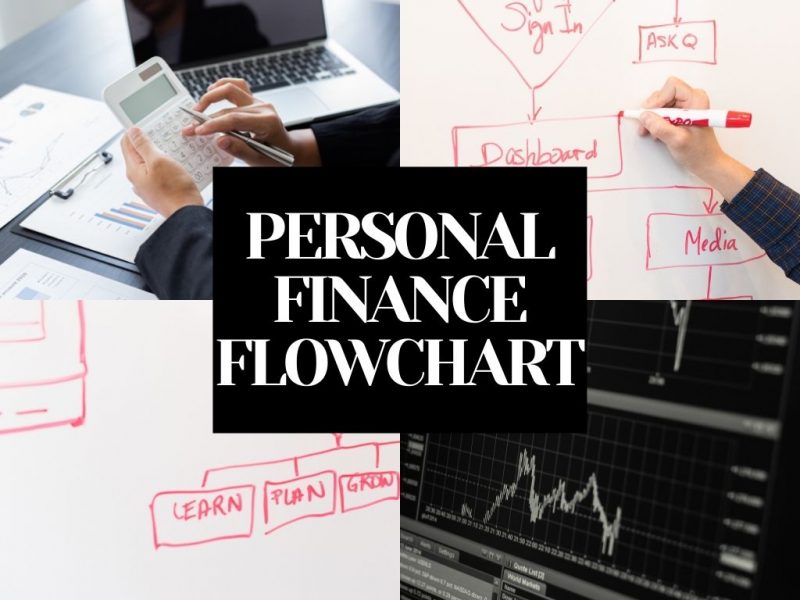This article has been reviewed by Sumeet Sinha, MBA (Emory University Goizueta Business School). Should you have any inquiries, please do not hesitate to contact at sumeet@finlightened.com.
As a teen, it’s easy to get overwhelmed when learning about personal finance. There are so many things you need to know and be aware of, but where should you start?
It seems like there is no simple answer. That being said: what if I told you that there were some beginner-friendly books with all the knowledge needed for getting started with personal finance? Books that will teach teens and young adults everything they need to know about personal finance.
Keep reading and discover our list of the best personal finance books for teens:
Best Personal Finance Books For Teens And Young Adults
Here are some of the best personal finance books for teens and young adults available on Amazon
1. “How To Money: Your Ultimate Visual Guide to the Basics of Finance” by Jean Chatzky, Kathryn Tuggle
How to Money is a great resource for learning about the basics of personal finance. The book is divided into sections on money management, saving, investing, credit and debt, and home ownership. Each section includes information on the different aspects of each topic, as well as tips and advice from experts.
What makes it the best: How to Money is a great resource for teens because it provides clear and concise information on a variety of financial topics. The book also includes helpful illustrations and diagrams to help readers understand the concepts being discussed.
What age group it’s good for: How to Money is appropriate for teens aged 14 and up who are interested in learning about personal finance.
How to Money: Your Ultimate Visual Guide to the Basics of Finance on Amazon
⭐️⭐️⭐️⭐️⭐️ (4.5)
- Quality: The book has garnered a high average rating, indicating that many readers found it valuable.
- Target Audience: Several reviewers mentioned that the book is an excellent gift for young adults, especially those graduating from high school or college.
- Content: The book provides easily digestible information and advice on finance. Some reviewers appreciated the discussions on money beliefs and their impact on self-worth, spending, and investing.
- Bias Concerns: A few reviewers expressed concerns about perceived political and gender biases in the book.
- Recommendation: While the book offers valuable financial advice for young adults, potential buyers should be aware of the mentioned biases and decide if it aligns with their preferences.
2. “I Want More Pizza: Real World Money Skills For High School, College, And Beyond” by Steve Burkholder
I Want More Pizza is a personal finance book for teens that aims to teach them about financial responsibility in a fun and relatable way. The book follows the story of a teenage girl who is trying to save up for a new pizza oven. Along the way, she learns about budgeting, investing, and other financial concepts.
What readers will learn: I Want More Pizza is a great introduction to personal finance for teens. The book covers topics like budgeting, saving, and investing in an easy-to-understand way. Additionally, the book includes tips and advice from real teens on how to manage money responsibly.
Why it’s good for beginner readers: I Want More Pizza is a great choice for reluctant readers because it is short, relatable, and packed with information. Additionally, the book includes helpful illustrations that make complex concepts easier to understand.
I Want More Pizza: Real World Money Skills For High School, College, And Beyond on Amazon
⭐️⭐️⭐️⭐️⭐️ (4.5)
- Quality: The book is well-received for its easy-to-understand content, especially for high school students and young adults. It provides practical advice on personal finance, making it a popular choice for high school graduation gifts.
- Content: The book covers topics such as saving, investing, understanding mental blocks, determining risk, the dangers of debt, credit vs. debit cards, compound growth, and paying for college. It emphasizes the importance of starting early and how “time is their biggest asset” for young readers.
- Structure: The book is organized into an introduction and four chapters: “You”, “Saving”, “Growing Savings”, and “Debt”. Each chapter is referred to as a “slice” of the pizza. However, some readers found the pizza metaphor to be a bit hokey and not entirely consistent.
- Engagement: The chapters are short, making it easy for younger readers to engage without getting bored. The discussion questions at the end of each chapter are useful for comprehension and sparking conversations about money.
- Audience: While the book is primarily targeted at teens and young adults, some reviewers mentioned that it’s a good introductory finance book for all ages. It’s especially beneficial for those who are new to the world of finance and want a solid foundation.
Bottom Line: “I Want More Pizza” is a valuable resource for young individuals looking to gain a foundational understanding of personal finance. It’s a recommended read for those on the brink of adulthood or anyone seeking basic financial knowledge.
Bestseller Personal Finance Books
3. “Rich Dad Poor Dad for Teens: The Secrets about Money – That You Don’t Learn in School!” by Robert T. Kiyosaki
Rich Dad Poor Dad is a book that has been inspiring people of all ages for years. It’s especially impactful for teenagers, as it provides valuable lessons on financial literacy and responsibility.
In “Rich Dad, Poor Dad for Teens”, Robert Kiyosaki shares the story of his two dads – his real father (poor dad) and the father of his best friend (rich dad), and how each shaped his views on money and investing.
Kiyosaki argues that the biggest difference between the rich and the poor is not income, but the mindset. He believes that if you want to be wealthy, you need to think like a rich person. And one of the best ways to do that is to start investing early.
Rich Dad Poor Dad for Teens: The Secrets about Money–That You Don’t Learn in School! on Amazon
⭐️⭐️⭐️⭐️ (4.3)
- Quality: The book is praised for its motivational content, encouraging readers to invest in themselves early in life. The principles outlined are sound, but some readers noted that it lacks specific investing advice.
- Content: The book emphasizes the importance of financial education, which is often not taught in schools. It provides insights into investing, entrepreneurship, and education.
- Repetitiveness: Some readers found the author to be verbose and repetitive, suggesting that skimming through some chapters might save time.
- Audience: While the book is targeted at teens, it seems to resonate with readers of all ages. Parents have found it beneficial to read along with their teenagers.
- Size: A few readers were surprised by the size of the paperback, noting it’s smaller than expected. However, despite its size, it’s packed with valuable lessons.
- Recommendations: Some readers suggested alternative books that offer more detailed investing advice, while others felt this book was a must-read for its foundational principles.
Bottom Line: “Rich Dad Poor Dad for Teens” is a valuable resource for young readers looking to gain financial literacy. While it may not delve deep into specific investment strategies, it lays a strong foundation for understanding the importance of financial education. It’s a recommended read for teens and their parents alike.
4. “Paying for College, 2023: Everything You Need to Maximize Financial Aid and Afford College” by The Princeton Review, Kalman Chany
This book is a comprehensive guide to paying for college and covers everything from maximizing financial aid to affordable college options. It includes information on the FAFSA form, scholarships, grants, student loans, and more.
What’s inside: The book includes an overview of the college admissions process, information on how to choose the right school for you, and tips on how to get the most financial aid possible. It also covers different types of loans and how to manage your money while in college.
Why we recommend it: This book is a great resource for anyone who is planning on going to college. It provides detailed information on all aspects of financing your education and can help you save a lot of money in the long run.
⭐️⭐️⭐️⭐️ (4.4)
- Quality: The book is highly regarded for its comprehensive guidance on college financial aid and affordability. It is considered a valuable resource for parents navigating the college admissions process.
- Comparison: Some users have compared it to other books on the same topic and found this edition by Princeton to be superior, leading them to choose it over others.
- Recommendation: If you’re a parent or student looking for in-depth information on maximizing financial aid and understanding the intricacies of affording college, this book is a must-have. Its detailed insights and expert advice make it a standout choice in its category.
5. “Broke Millennial: Stop Scraping by and Get Your Financial Life Together” by Erin Lowry
Are you a broke millennial? If so, this book is for you! In Broke Millennial: Stop Scraping by and Get Your Financial Life Together, author Erin Lowry provides an overview of what it means to be a broke millennial and offers tips on how to get your financial life together.
In this book, you’ll learn about the following topics:
- What it means to be a broke millennial
- How to get your financial life together
- The importance of credit and debt management
- How to save money effectively
- Investing basics
⭐️⭐️⭐️⭐️⭐️ (4.6)
- Quality: The book is highly rated by readers, with many praising its informative and relatable content.
- Impact: Several readers mentioned that the book has significantly improved their financial mindset and habits. One reader even claimed to have raised their credit score by 193 points in just 4 months after implementing the book’s advice.
- Readability: The writing style is engaging, with many readers highlighting its wit and humor. It’s not a typical finance book and keeps the reader’s attention throughout.
- Relevance: The book is particularly aimed at millennials and covers a wide range of financial topics, making it suitable for those with varying levels of financial knowledge.
- Content: It touches on topics like the mental aspects of finances, benchmarks to hit at certain ages, basics of investing, retirement planning, buying a house vs. renting, and understanding credit cards and credit reports.
- Personal Stories: The book incorporates personal stories and experiences, making it relatable and easy to understand for readers.
- Structure: The book is structured in a way that allows readers to jump between chapters based on their interests and needs without missing out on crucial information.
Bottom Line: If you’re a millennial looking to get a grip on your finances, this book is a must-read. It’s comprehensive, relatable, and offers actionable advice to help you navigate the financial challenges of adulthood.
6. “Get a Financial Life: Personal Finance in Your Twenties and Thirties” by Beth Kobliner
Get a Financial Life: Personal Finance in Your Twenties and Thirties is a great book for older teens who want to learn about personal finance. The book covers topics such as budgeting, saving, investing, and credit. It also includes information on how to manage your money in your twenties and thirties.
What You’ll Learn: The book covers topics such as budgeting, saving, investing, and credit. It also includes information on how to manage your money in your twenties and thirties.
Get a Financial Life: Personal Finance in Your Twenties and Thirties on Amazon
⭐️⭐️⭐️⭐️⭐️ (4.6)
- Quality: The book is highly recommended by many readers for its comprehensive and straightforward content. It’s described as an excellent guide for gaining financial intelligence, regardless of age.
- Audience: While the book is primarily targeted at younger individuals, many readers believe it serves as a basic guide for all ages and various financial situations.
- Content: The book covers a wide range of financial topics, including budgeting, credit, banking, investing, retirement planning, insurance, taxes, and more. It provides actionable advice and strategies that are applicable to everyone.
- Readability: Many readers found the book easy to understand, even for those who usually find personal finance topics boring or confusing. The content is structured in a way that empowers readers to make informed financial decisions.
- Impact: Several readers mentioned that after reading the book, they felt more competent and prepared to manage their finances. Some even felt inspired to share the book with friends and family.
- Bottom Line: “Get a Financial Life: Personal Finance in Your Twenties and Thirties” is a must-read for anyone looking to gain a solid understanding of personal finance. Whether you’re just starting out or looking to refine your financial knowledge, this book provides valuable insights and actionable advice to help you achieve financial success.
7. “I Will Teach You to Be Rich” by Ramit Sethi
“I Will Teach You to Be Rich, Second Edition” by Ramit Sethi is a comprehensive guide that offers a fresh perspective on personal finance.
The updated content ensures that readers are getting the most current advice, which is a testament to the author’s commitment to providing value. The 6-week program is well-structured, making it easy for readers to follow and implement the strategies in their lives.
One of the standout features of this book is its focus on the behavioral aspect of money management. Instead of just providing financial advice, Sethi delves deep into the psychological barriers that often prevent individuals from making sound financial decisions. This holistic approach is what sets this book apart from other personal finance books in the market.
On the flip side, while the book is packed with valuable insights, some readers might find certain sections a bit repetitive.
However, the pros far outweigh the cons, making this book a must-read for anyone looking to take control of their finances and lead a richer life.
“I Will Teach You to Be Rich, Second Edition” by Ramit Sethi on Amazon
⭐️⭐️⭐️⭐️⭐️ (4.6)
Key Features:
- Updated Content: This is the second edition of the book, which means it contains updated content to stay relevant with the changing times.
- Financial Advice: The book offers a 6-week program that focuses on personal finance and investment.
- Practical Steps: It provides actionable steps to help readers manage their money, from setting up automatic payments to negotiating lower bills.
- Behavioral Approach: The author, Ramit Sethi, emphasizes a behavioral approach to money management, addressing the psychological barriers that hold people back from achieving financial success.
8. “Why Didn’t They Teach Me This in School?” by Cary Siegel
Cary Siegel’s book “Why Didn’t They Teach Me This in School?” is a must-read for anyone who wants to learn about personal finance. In this book, Siegel provides an overview of the basics of personal finance, including budgeting, saving, investing, and credit. He also discusses the importance of financial literacy and offers tips on how to teach it to your children.
What You Will Learn:
- The basics of personal finance, including budgeting, saving, investing, and credit
- The importance of financial literacy
- How to teach your children about money management
- How to make your money work for you
⭐️⭐️⭐️⭐️ (4.4)
- Quality: The book has been described as a great gem, brief yet comprehensive, and can be read in a day. It offers solid advice and is easy to follow.
- Target Audience: Some readers felt the book is more suited for high school students or young adults. It provides basic financial principles that are essential for personal money management.
- Content: While many readers found the principles beneficial, especially for those starting their financial journey, some felt that certain advice, like the stance on credit cards, was outdated or misleading. The book emphasizes living within or below one’s means, avoiding credit card debt, and investing wisely.
- Presentation: The book is structured with 99 principles, each covered concisely within two pages, making it digestible for readers. However, some readers felt that the font size was unnecessarily large, possibly to increase the book’s size.
- Criticism: A few readers disagreed with some of the book’s advice, particularly regarding credit cards and free checking accounts. Some felt that the book could delve deeper into certain topics.
Bottom Line: “Why Didn’t They Teach Me This in School?” offers a collection of personal money management principles that can serve as a foundation for financial literacy. While it provides valuable insights, especially for younger readers, some may find certain advice outdated. It’s a recommended read for those looking to grasp basic financial concepts, but readers should also seek additional resources to get a comprehensive understanding of personal finance.
9. “The Motley Fool Investment Guide for Teens: 8 Steps to Having More Money Than Your Parents Ever Dreamed Of” by David and Tom Gardner
The Motley Fool Investment Guide for Teens is a book that was written by David and Tom Gardner. The book gives an overview of investing and explains what makes it a good option for teens. The book also covers the different types of investments, and how to pick the best one for your needs.
What makes it good for investing: The Motley Fool Investment Guide for Teens is a good book for investing because it provides an overview of the different types of investments, and how to pick the best one for your needs. The book also covers the different risks associated with each type of investment, and how to manage those risks.
⭐️⭐️⭐️⭐️⭐️ (4.6)
- Quality: The book is highly rated by many readers, indicating that it offers valuable content.
- Target Audience: It’s designed specifically for teenagers, aiming to introduce them to the world of investing.
- Content: The book covers foundational topics such as setting financial goals, understanding the financial system, the basics of the stock market, and mutual funds. It also delves into investing in individual companies, tracking their performance, understanding financials, and even setting up an investment club.
- Clarity: Many readers found the book to break down complex topics into understandable terms for teens. However, some felt that certain areas could benefit from more detailed explanations or additional resources.
- Relevance: While the book provides timeless financial principles, some readers felt that certain examples or references were dated. The book might benefit from an updated edition to address more current financial opportunities and challenges.
- Recommendation for Teachers: It’s seen as a valuable resource that should be included in high school personal finance curriculums.
- Overall: The majority of readers found the book beneficial, informative, and a great starting point for young individuals interested in personal finance and investing.
Bottom Line: If you’re a teenager or know one who’s interested in understanding the basics of investing and personal finance, this book is a worthy addition to your reading list.
10. “How to Turn $100 into $1,000,000” by James McKenna
This book is written by James McKenna, a personal finance expert and the founder of Money Smarts Blog. In this book, McKenna provides an overview of what young adults need to know about personal finance in order to start building their wealth. He covers topics such as saving money, investing, and budgeting. Additionally, he offers tips on how to turn $100 into $1 million over time through compound interest and other investment strategies.
What You Will Learn:
- The basics of personal finance and how to start building your wealth
- How to save money effectively
- How to invest your money for long-term growth
How to Turn $100 Into $1,000,000: Earn Save Invest on Amazon
⭐️⭐️⭐️⭐️⭐️ (4.6)
- Quality: The book is highly rated by readers, with many finding it informative and engaging.
- Audience: It is suitable for both kids and adults. Young readers find it captivating, and it breaks down complex financial topics in an understandable manner.
- Content: The book covers a wide range of financial topics, including earning money, getting a job, budgeting, investing, and saving. It also provides practical advice and plans for financial growth.
- Presentation: The graphic presentation of the material is appreciated by readers, making it visually appealing and easy to understand.
- Inspiration: Many readers mentioned that the book inspired them or their kids to save, invest, and think about their financial future.
- Caveats: Some readers mentioned that the book might give kids certain ideas, like wanting to buy a dirt bike, which parents might not agree with.
- Physical Aspect: A few readers found the book a bit heavy to hold for extended periods.
Bottom Line: “How to Turn $100 Into $1,000,000: Earn Save Invest” is a comprehensive guide that provides valuable financial insights for readers of all ages. Whether you’re a young reader looking to understand the basics of money management or an adult seeking financial wisdom, this book is a must-have. Highly recommended for anyone aiming to improve their financial literacy and grow their wealth.
11. “The Money Savvy Student” by Adam Carroll, Michael Paustian, et al
The Money Savvy Student is a book that can help you learn about personal finance and money management. The book covers topics such as budgeting, saving, investing, and credit. The book is geared towards teens and young adults.
The Money Savvy Student can help you learn about personal finance and money management. The book covers topics such as budgeting, saving, investing, and credit. The book is geared towards teens and young adults.
Topics covered in the book include budgeting, saving, investing, and credit. The book is geared towards teens and young adults.
The Money Savvy Student on Amazon
⭐️⭐️⭐️⭐️⭐️ (4.6)
- Quality: The book is highly rated by readers, with an average rating of 4.6 out of 5 stars.
- Content: Adam Carroll explains money, finance, and careers in a simple, concise, yet thorough manner. The book covers everything you need to know about the topic, with additional resources available.
- Audience: It’s perfect for high school students, especially those in personal finance classes. Teachers have found it to be a valuable resource in the classroom.
- Relevance: The book is not only for students but also for parents who want to give their children a better understanding of money.
- Recommendation: Many readers recommend this book as an essential read for high school students before they graduate. It’s also a great initial finance book for young adults.
Bottom Line: “The Money Savvy Student” is a comprehensive guide to understanding money, finance, and careers. It’s a must-read for students and young adults, and it comes highly recommended by both educators and parents.
12. “Not Your Parents’ Money Book: Making, Saving, and Spending Your Own Money” by Jean Chatzky and Erwin Haya
In this book, you’ll learn about the basics of money and how to make and save it. You’ll also find out what your parents may not have taught you about money, such as how to invest it and how to protect yourself from financial scams.
What You’ll Learn:
- The basics of money, including what it is and where it comes from
- How to make and save money
- What your parents may not have taught you about money
- How to invest your money
- How to protect yourself from financial scams
Not Your Parents’ Money Book: Making, Saving, and Spending Your Own Money on Amazon
⭐️⭐️⭐️⭐️ (4.1)
- Quality: The book is in good shape, indicating decent physical quality.
- Educational Value: It effectively introduces tweens and teens to the basics of money, including wages, credit, debt, investing, spending, and saving. The content is engaging enough that young readers show interest in continuing the discussion about money.
- Relevance: Some users mentioned that certain information might be a bit dated, such as references to a housing recession. This might require additional explanations to young readers.
- Motivational Impact: The book not only educates but also motivates young readers to think about earning and saving money.
- Audience Reception: Many found it a great starting point to initiate money conversations with their kids, while others felt it was just okay.
Bottom Line: “Not Your Parents’ Money Book” is a valuable resource for introducing young readers to the world of finance. Its engaging content and motivational impact make it a recommended read for tweens and teens. However, be prepared to provide context or updates on certain dated information.
13. “Loaded: Money, Psychology, and How to Get Ahead Without Leaving Your Values Behind” by Sarah Newcomb
In Loaded, author Nancy L. Anderson explores the psychological factors that lead people to make financial decisions that are not in their best interests. She provides readers with an understanding of how money affects their lives and how to make better choices with their finances.
What You’ll Learn:
- How money affects your psychological well-being
- The importance of making financial decisions that align with your values
- How to create a budget and stick to it
- The basics of investing and saving for retirement
- Tips for reducing debt and building wealth
Loaded: Money, Psychology, and How to Get Ahead without Leaving Your Values Behind on Amazon
⭐️⭐️⭐️⭐️ (4.4)
- Quality: The book has been described as an “absolutely great book” by many readers. It provides insights into the psychology of money and how it affects our lives and decisions. The book’s significance is reflected in how long it stays with readers, with one mentioning they’ve been digesting it for weeks.
- Content: The book delves deep into understanding one’s personal story with money and how it colors their view of the world. It provides exercises and practices to help readers better understand their relationship with money and its role in modern society.
- Impact: Many readers have mentioned how the book has changed their lives. It has helped them heal their relationship with money, understand their self-sabotaging behaviors, and make better financial decisions.
- Issues: A few readers mentioned receiving damaged copies or missing pages, which might be an issue with the print or delivery.
- Recommendation: Overall, the book is highly recommended for anyone interested in understanding the psychology of money and its impact on our lives. It’s engaging, insightful, and can be a game-changer for many.
14. “The Young Entrepreneur’s Guide to Starting and Running a Business: Turn Your Ideas into Money!” by Steve Mariotti
In The Young Entrepreneur’s Guide to Starting and Running a Business, author Chris Salerno provides an overview of what the book will cover and how it can be used.
He explains that the book is designed for young people who want to start their own businesses, and provides an overview of the topics covered. These include business planning, marketing, financing, and managing employees. Salerno also offers advice on how to make your business successful and includes resources for further reading.
⭐️⭐️⭐️⭐️⭐️ (4.7)
- Inspiration: Many readers found the book to be a source of inspiration, motivating them to take action and not procrastinate.
- Audience: Suitable for all age groups, including young readers. An 8-year-old found it engaging and reads it every night.
- Content: The book provides thought-provoking points and helps shape the reader’s mindset towards entrepreneurship. It is packed with usable information and real-life examples.
- Clarity: Written in a clear manner, the book explains concepts with definitions and examples, making the entrepreneurial journey less intimidating.
- Engagement: Despite its textbook appearance, readers found it engaging and hard to put down.
- Utility: It serves as a comprehensive guide, starting from the basics and building upon each chapter. Suitable for anyone with a business idea.
- Feedback: Some readers mentioned minor issues like stains on a few pages.
Bottom Line: This book is a valuable resource for budding entrepreneurs. Its clear explanations, real-life examples, and engaging content make it a must-have for anyone looking to venture into the world of business.
15. “The Modern Guide to Stock Market Investing for Teens: How to Ensure a Life of Financial Freedom Through the Power of Investing” by Alan John
⭐️⭐️⭐️⭐️ (4.4)
- Quality: The book is well-received with an average rating of 4.4 out of 5 stars.
- Target Audience: It is specifically designed for young teens who are new to the world of investing.
- Content: Some readers found the book to be a quick and easy read that provides a basic introduction to stock investing. However, a few mentioned that the content might be too basic for those who already have some knowledge about investing.
- Practicality: One reader mentioned that their grandson read the book and successfully invested in stocks, seeing positive returns
- Personal Experiences: The author shares personal experiences, which some readers found amusing and insightful.
- Recommendation for All Ages: Despite being targeted at teens, even adults have found value in the book. Some mentioned that it’s a great starting point for those new to investing, regardless of age.
- Educational Value: The book is seen as a valuable resource for teaching teens about investing, a topic not commonly covered in schools.
Bottom Line: If you’re looking for a beginner’s guide to stock market investing for teens, this book is a solid choice. It provides a basic introduction to the topic, making it suitable for those new to investing. However, if you or the intended reader already has some knowledge about investing, the content might come off as too basic.
16. “The Teenage Investor: How to Start Early, Invest Often and Build Wealth” by Timothy Olsen
What it covers: The basics of investing, including how to start early and invest often to build wealth.
Why it’s helpful: This book is a great introduction to investing for teens. It covers the basics of investing, including how to start early and invest often to build wealth.
The Teenage Investor : How to Start Early, Invest Often & Build Wealth on Amazon
⭐️⭐️⭐️⭐️⭐️ (4.5/5)
- Quality: The book is highly rated with an average rating of 4.5 stars based on 16 reviews.
- Content: It serves as a beginner’s guide to investing, with some readers wishing they had access to this book during their teenage years.
- Relevance: Some readers believe that the content needs to be updated for the current times, but the foundational principles remain solid.
- Usability: Many teenagers found the book easy to understand and actionable, allowing them to navigate their first stock purchases. However, a few found it confusing or not as straightforward.
- Impact: Several readers emphasized the importance of understanding money and investing early, with one stating that every teenager and young adult should read this book. Some even mentioned that the book set them on the right financial path.
- Recommendation: Overall, “The Teenage Investor” is a valuable resource for young individuals looking to understand the basics of investing and personal finance. It provides foundational knowledge that can benefit readers in their financial journey.
Tips For Budgeting For Teens
A budget is a plan that allocates your income towards different expenses. It’s important to start budgeting early on in life so that you can get into the habit of spending and saving wisely.
To start budgeting, you will need to calculate your income and track your spending. You can do this by keeping receipts or using a budgeting app. Once you have an idea of where your money is going, you can start setting aside money for specific expenses.
What to include in a budget: Your budget should include all of your regular expenses, such as rent, food, transportation, and utilities. You should also set aside money for savings and debt repayment. Additionally, you may want to include some discretionary items in your budget, such as entertainment or travel.
The Federal Deposit Insurance Corporation (FDIC) guarantees HYSA accounts up to $250,000 per depositor, each insured bank, and as such, they are normally FDIC-insured. Because of this, High Yield Savings Accounts are a risk-free method to store money and earn more interest than standard savings accounts.
How to stick to a budget: One of the most important aspects of sticking to a budget is tracking your spending. This will help you stay mindful of where your money is going and ensure that you are staying within your allotted amounts. Additionally, it can be helpful to set up automatic payments for fixed expenses like rent or mortgage so that you don’t have to worry about forgetting to pay them each month. Finally, try to avoid impulse purchases by waiting 24 hours before making any big purchases.
Tips For Investing and Saving For Teens
Investing is the act of putting money into a company or enterprise with the expectation of earning a profit from the investment. When you invest in stocks, for example, you are buying shares of ownership in a company and hoping that the value of those shares will go up over time so that you can sell them at a profit.
Saving is setting aside money on a regular basis so that you have it available to spend in the future. This can be done by opening a savings account at a bank or credit union, where your money will earn interest over time. You can also save by investing in stocks, bonds, or other securities.
How to invest: There are many different ways to invest your money. Some people choose to buy stocks, while others invest in mutual funds or exchange-traded funds (ETFs). You can also invest in real estate, bonds, and other securities. The best way to learn how to invest is to consult with a financial advisor who can help you determine what types of investments are right for you based on your goals and risk tolerance.
How to save: One easy way to start saving is to open up a savings account at your local bank or credit union. You can also start saving by setting aside a certain amount of money each month into a dedicated savings account. Another option is to set up a direct deposit from your paycheck into your savings account. Whatever method you choose, the important thing is to make saving a habit so that you can reach your financial goals.
Final Words
Conclusion on Best Personal Finance Books For Teens And Young Adults: We hope you found the list useful. Go ahead and grab a book for yourself, friends or family and increase the financial quotient of the world.
Read also:
- 8 Best Credit Cards For Teachers
- 4 Best Credit Cards For Nannies
- 9 Best Credit Cards for Wedding Expenses
- 10 Best Credit Cards For Consultants
- 8 Best Credit Cards For Golf Lovers
- 6 Best Credit Cards for Traveling Consultants
- How to Use Credit Card Responsibly: 7 Must-Have Credit Habits
- Plastic Money – 3 Huge Payment Networks – Visa, Mastercard, and American Express
- Apple Pay and Google Pay – Which Is Better Among Top 2 Services?
- 8 Cool Benefits of Obtaining A Personal Loan – When to Consider It?
- How Do Business Credit Cards Work? 5 Reasons You Should Get One
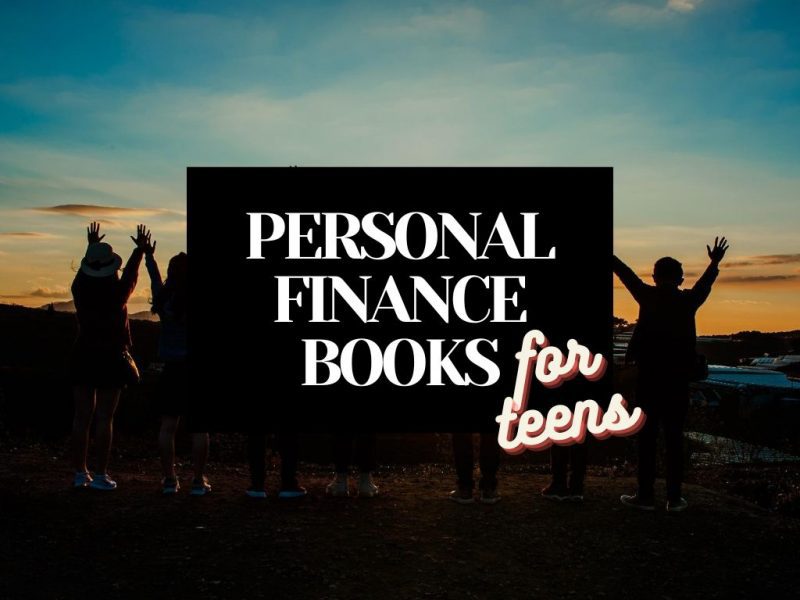

Read more
Popular Topics: Stocks, ETFs, Mutual Funds, Bitcoins, Alternative Investing, Dividends, Stock Options, Credit Cards
Posts by Category: Cash Flow | Credit Cards | Debt Management | General | Invest | Mini Blogs | Insurance & Risk Mgmt | Stock Market Today | Stock Options Trading | Technology
Useful Tools
Student Loan Payoff Calculator | Mortgage Payoff Calculator | CAGR Calculator | Reverse CAGR Calculator | NPV Calculator | IRR Calculator | SIP Calculator | Future Value of Annuity Calculator
Home | Blog
Our Financial Calculator Apps
Page Contents
